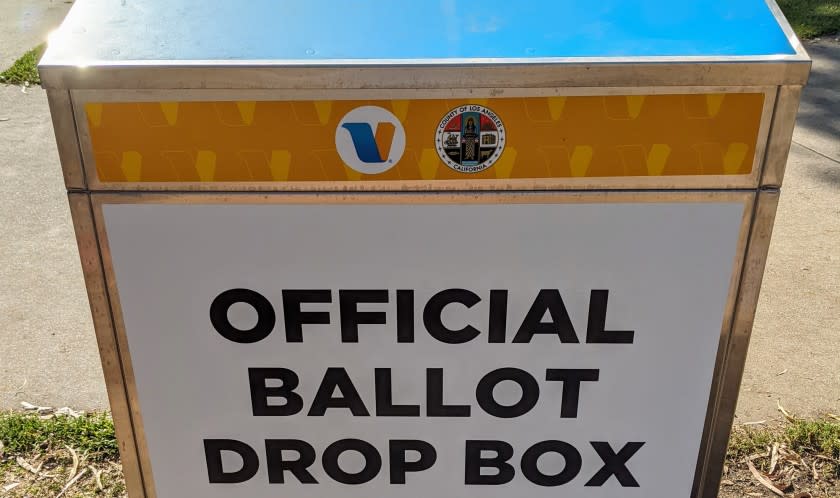Editorial: Opaque county process threatens Measure J funding

Perhaps it’s appropriate that Measure J, last year’s successful ballot measure to allocate a portion of county revenue to community investment and alternatives to incarceration, was put together in Los Angeles, the birthplace of Hollywood accounting.
The entertainment industry is notorious for finding creative ways to not show a profit on its ledgers, even for outrageously successful productions. Imagine, for example, that your 3-D animated intergalactic blockbuster is budgeted at $300 million and grosses $3 billion. That leaves $2.7 billion in profits to divide among, say, the author on whose book the movie was based, the ex-spouse of the producer (pursuant to the divorce settlement) and all the other participants who signed on for a percentage — until you factor in the Hollywood accounting, which subtracts various (and sometimes dubious) expenses and concludes that there is actually no reportable profit at all.
That, in essence, is what the backers of Measure J claim Los Angeles County is doing with its proposed 2021-22 budget and every annual budget that is to come after. It’s a point of serious contention as public hearings on the county budget begin this week.
The ballot measure states that “no less than ten percent (10%) of the County's locally generated unrestricted revenues in the general fund” will be allocated annually to community and criminal-justice-reform programs that address the disproportionate impact of racial injustice.
When the advocates run the numbers, 10% comes to about $900 million a year for Measure J programs, starting in three years when the full allocation begins. But the county’s calculation is $300 million. That’s quite a spread. It could be quite a lawsuit.
You see, county officials explain, the word “unrestricted” excludes from the total all preexisting obligations, which vary from year to year. Safety-net expenses, for example, will go up or down depending on the caseload. Lawsuit settlements, contractual obligations — they all come off the top.
No, the advocates counter, you’re allowing yourselves to just declare various revenues restricted when, in fact, the restriction applies to the expenditure, not the income. Restricted revenues are such things as the portion of sales taxes that must be allocated to public safety and fire protection under a 1993 state ballot measure.
The point is not that one side is clearly right and the other clearly wrong, but rather that such a dispute exists at all. Measure J is now engrafted into the county charter, for goodness’ sake. Its language should lead us to a mathematically precise figure beyond any rational dispute. How could such a disagreement happen?
There are several reasons, most of which come back to the nature of county government, which has no separate branches and therefore no checks and balances. Unlike in City Hall, where an independently elected mayor, city council, city attorney and controller would all bicker and dicker over language before anything comes to the ballot, everyone in the county works for the Board of Supervisors — the top budget officer (the CEO), the lawyers, the auditor-controller. If the supervisors want Measure J and they want it now, written the way it’s written, there’s little incentive or ability for other county officials to tell them no.
Nor does the board have committees, where proposals could be vetted and corrected under the watchful eye of and with input from the public.
For these reasons The Times editorial page is very wary of county ballot measures. In the case of what was to become Measure J, we said, in essence, “Are you kidding? This needs more time and scrutiny.” But community investment and alternatives to incarceration are crucial, the county has made historic steps toward creating such programs, and they need to be funded. In the end, we said “yes” to Measure J, as did a large majority of voters.
And those programs, many of which are still being hammered out, are indeed essential. So is the unusual coalition that is making them possible: community activists and advocates, working with the folks they have often considered their adversaries, county government staff and officials.
With essential help from nonprofit organizations and philanthropies, and despite mutual suspicions and divergent outlooks, this unlikely team has set the stage for a positive and historic shift in focus and resources from racial inequity, punishment and disinvestment to restoration, support and health. It’s imperative that the work continue, and imperative that the coalition not disintegrate over this or any other dispute. There are too many lives, too much justice and equity, and too much money at stake.
How much money, though, is the question. The supervisors should remember that voters have said “yes,” multiple times, to community reinvestment, racial equity and alternatives to incarceration. The advocates, meanwhile, ought to keep in mind that the county can’t move forward on any of those programs if it doesn’t remain solvent.
This story originally appeared in Los Angeles Times.

